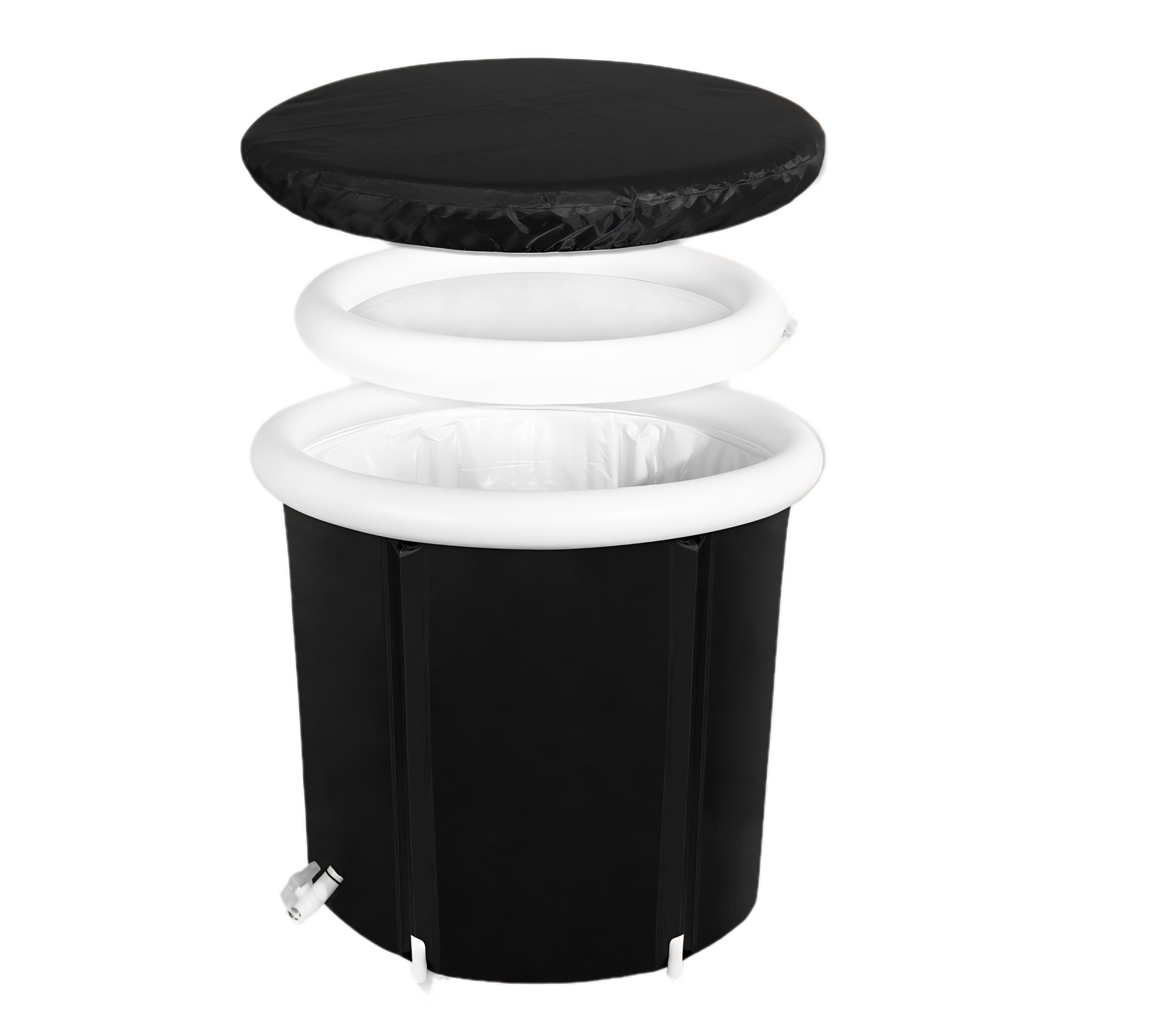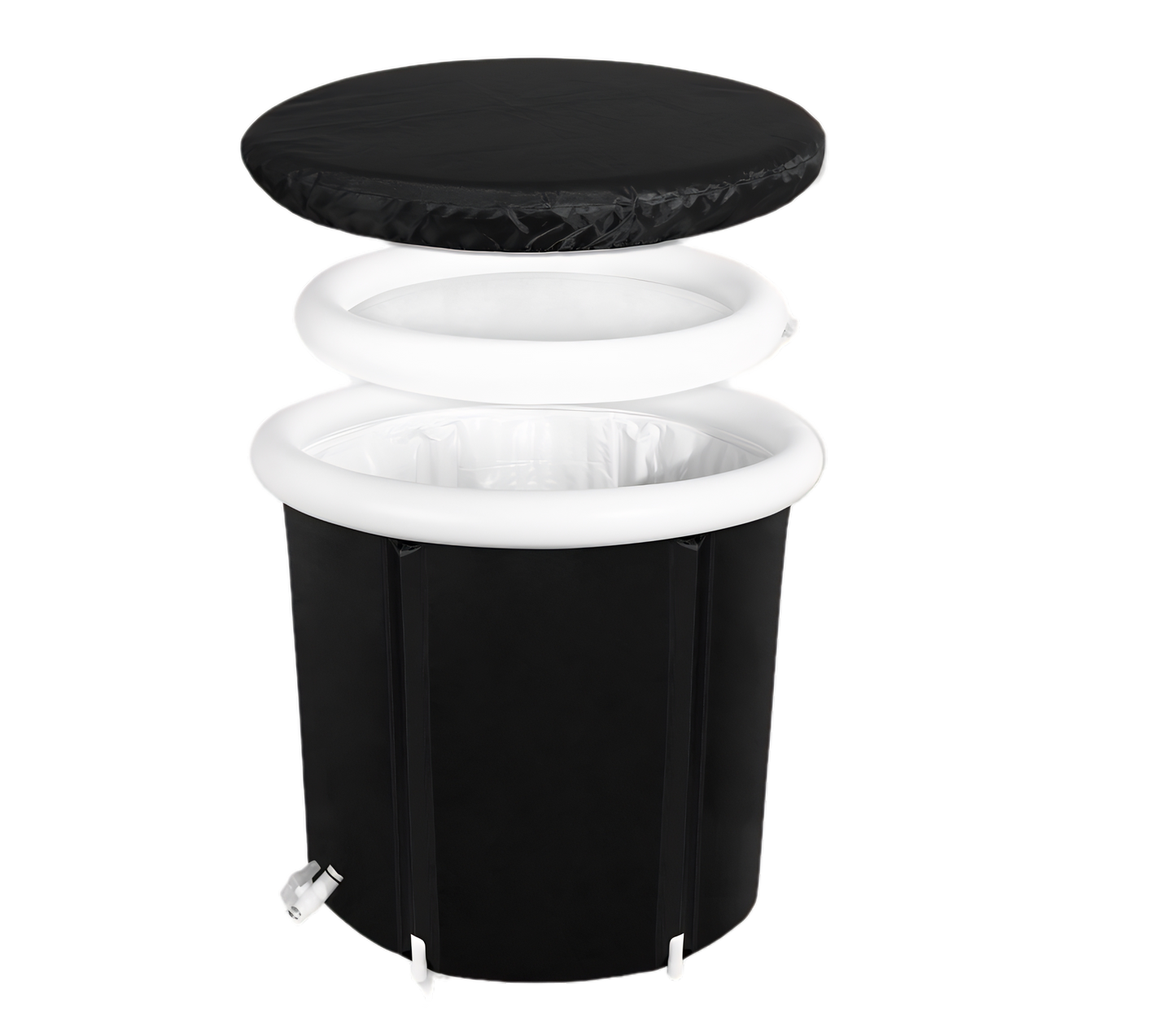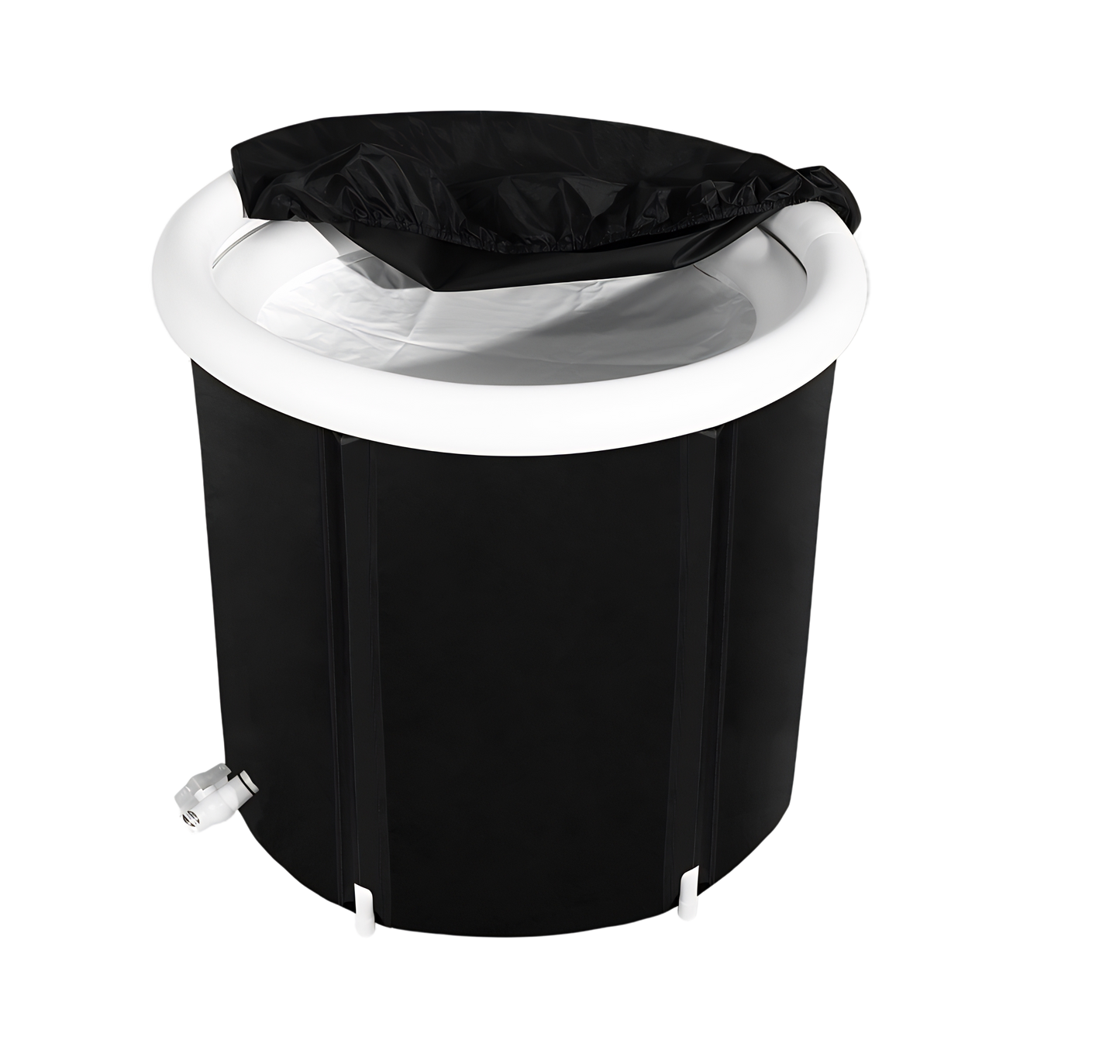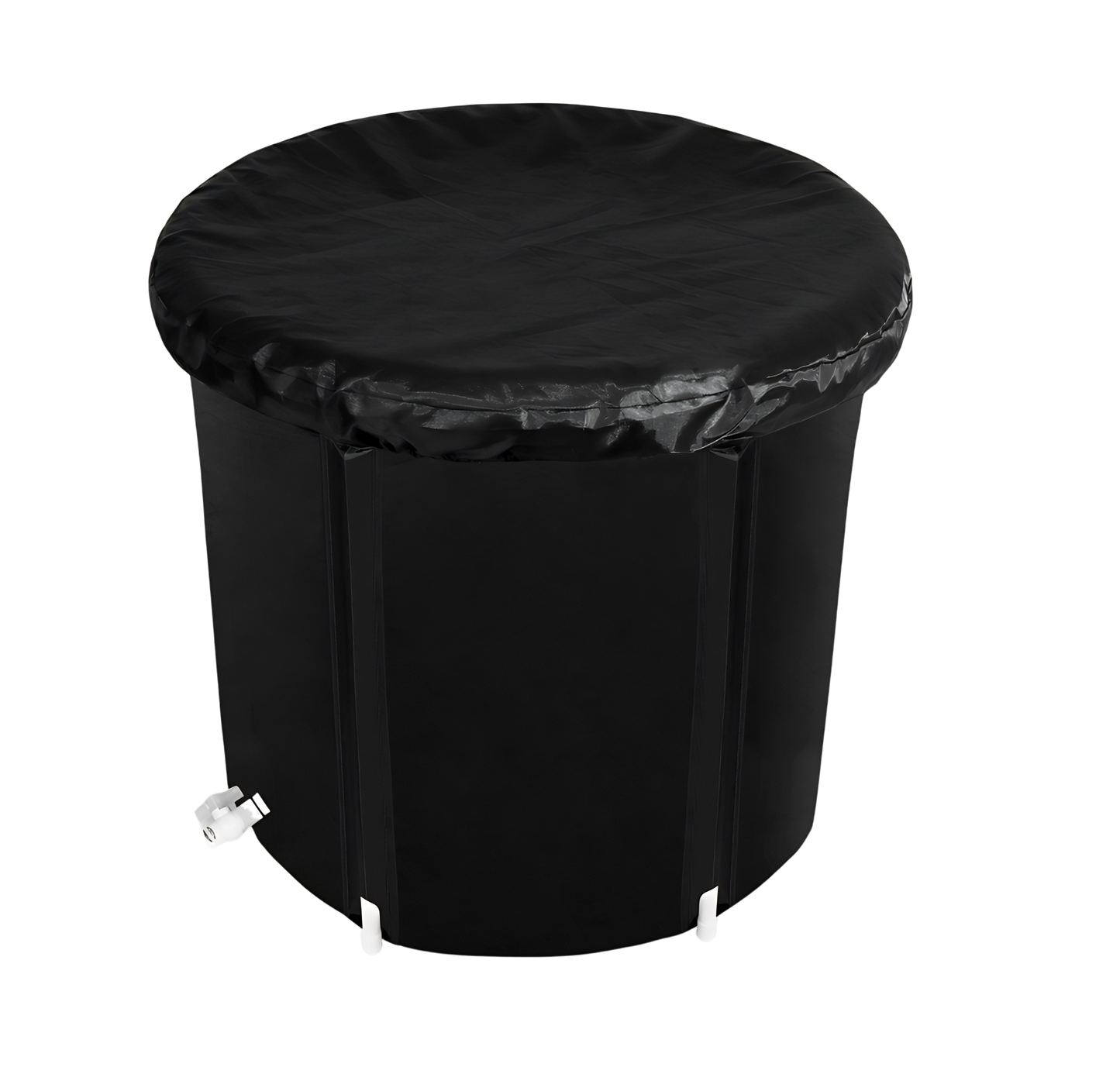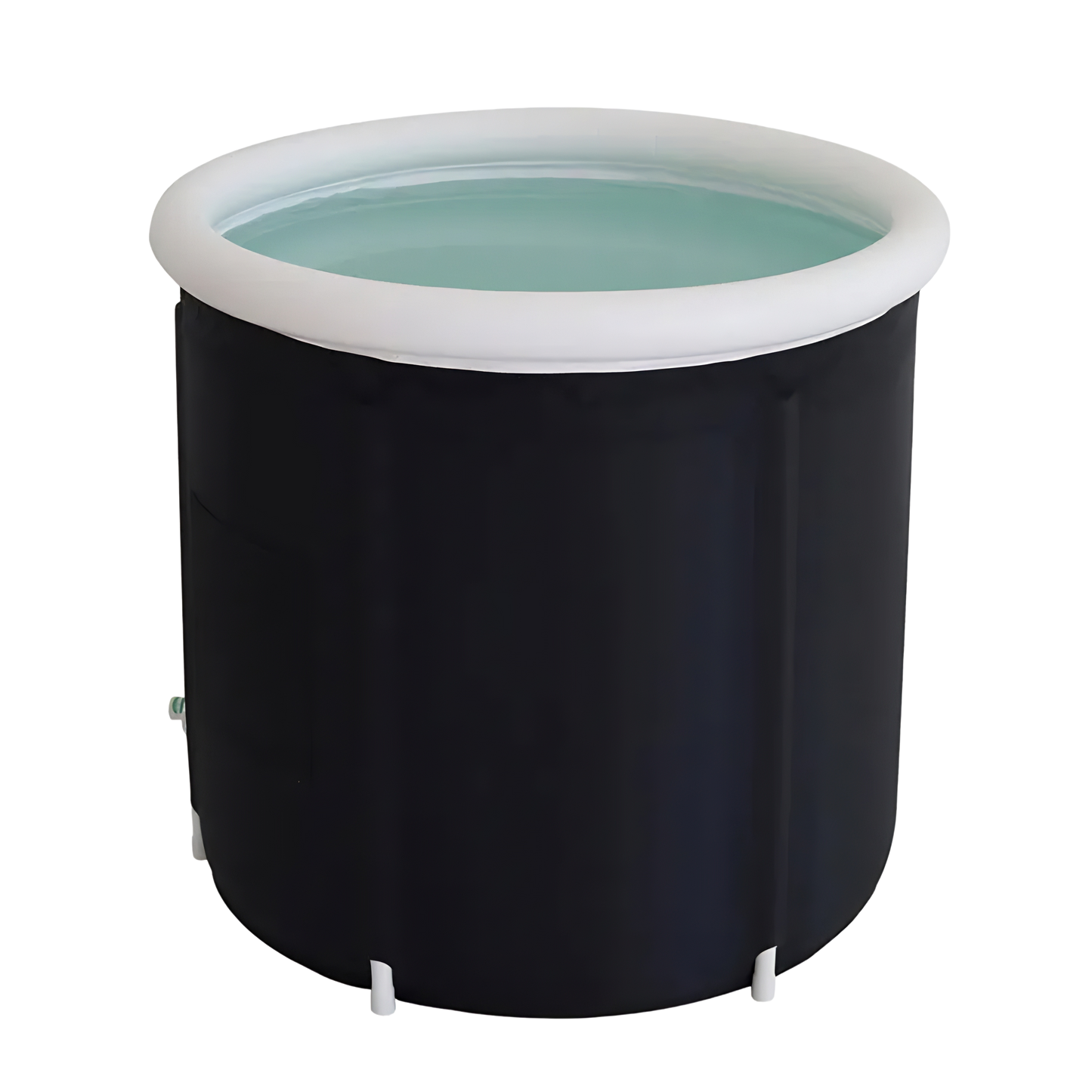Introduction
In the vast landscape of fitness and holistic wellness, two recovery modalities often spark intrigue: saunas and ice baths. Saunas, with their ancient origins, envelop individuals in therapeutic warmth, promoting relaxation and detoxification. Conversely, ice baths, characterized by their chilling embrace, offer an immediate jolt, known to rapidly reduce inflammation and accelerate muscle recovery. As athletes push boundaries and fitness aficionados seek the best post-workout routines, the question arises: Which is superior for recovery, especially after specific types of physical exercise?
This article delves deep into the science behind each modality, comparing their unique benefits. We'll also explore which method shines brightest for different activities, be it endurance running, weightlifting, or high-intensity workouts. Join us on this enlightening journey to discover insights that could redefine your approach to post-exercise recovery.
Understanding Recovery
Recovery, in the realm of physical health and fitness, is an active and essential process that underscores overall well-being and athletic prowess. It's the body's mechanism to mend and rejuvenate after the rigors of intense activity. When we exercise, our muscles undergo microscopic damage, which, though natural, requires repair. This restoration is driven by blood flow, bringing vital nutrients to rebuild stronger muscles.
Beyond just physical repair, recovery also addresses hormonal balance and energy restoration. Post-exercise, there's a spike in stress hormones like cortisol. Recovery ensures these levels normalize. Additionally, workouts deplete our primary muscle energy source, glycogen. Recovery replenishes these stores, prepping muscles for future exertion. Mental well-being, too, benefits from recovery, offering respite from potential burnout and mental fatigue.
The recovery process isn't uniform for everyone. Factors like exercise intensity, individual fitness, age, and genetics influence its nature and duration. Overlooking proper recovery can lead to issues like overtraining, reduced performance, and increased injury risk.
In essence, recovery is a cornerstone of fitness, ensuring that effort translates into progress and sustained well-being.
The Role of Sauna in Enhancing Recovery

Saunas, traditionally used for relaxation and detoxification, have emerged as a potent tool in aiding post-exercise recovery. Let's delve into the science behind how saunas contribute to this process:
The Power of Vasodilation
Vasodilation is the widening or dilation of blood vessels (Ramanlal & Gupta, 2023). When you sit in a sauna, the heat causes blood vessels, especially those near the skin's surface, to expand. This increased blood flow accelerates the delivery of oxygen and essential nutrients to muscles and tissues, facilitating faster repair and reducing muscle soreness.
Harnessing the Benefits of Adaptive Hormesis
Adaptive hormesis is a process where exposure to low doses of stressors, like heat, leads to increased resilience and better health (Mattson, 2008). Saunas, by exposing the body to controlled heat stress, trigger a series of beneficial physiological responses. This includes the production of heat shock proteins, which repair damaged proteins and protect against cellular stress (Dubey et al., 2015). Over time, regular sauna use can make the body more resilient to various forms of physical stress, enhancing recovery and overall well-being.
Countering Oxidative Stress
Oxidative stress occurs when there's an imbalance between free radicals and antioxidants in the body. Intense workouts can increase free radical production. Saunas help in reducing oxidative stress by promoting the production of antioxidants and enhancing their activity. This not only aids in recovery but also boosts overall health.
Combatting Inflammation
Inflammation is the body's natural response to injury, including the micro-tears in muscle fibers resulting from intense physical activity. While short-term inflammation can be beneficial, prolonged inflammation can hinder the recovery process. The heat from saunas can help reduce inflammation (Laukkanen & Laukkanen, 2018), thereby speeding up the healing process and alleviating muscle and joint pain.
Promotion of Mitochondrial Biogenesis

Mitochondria are often referred to as the "powerhouses" of our cells, responsible for producing energy. Seo et al. (2021) discovered that infrared rays, like those found in infrared saunas, can stimulate the production of new mitochondria in our cells, a process known as mitochondrial biogenesis. With more mitochondria, cells can produce energy more efficiently, leading to improved endurance and overall fitness.
Delving into Cold Plunge Recovery
Submerging oneself in an ice bath or taking a cold plunge might seem daunting, but these methods have been employed by athletes and wellness enthusiasts for centuries. The cold environment offers myriad benefits that can significantly aid in post-exercise recovery. Let's explore these benefits in detail:
Cultivating Mental Resilience
Taking an ice bath is not just a physical challenge but a mental one as well. The initial shock of the cold water requires mental fortitude to endure. Over time, regularly subjecting oneself to this challenge can foster mental toughness and resilience – just like physical muscles grow through repetition, so too do your mental ones. This mental strength can translate to other areas of life, helping individuals face challenges head-on and with greater confidence.
Lactic Acid Flushing and the Reduction of DOMS
During intense physical activity, the body produces lactic acid, which can accumulate in the muscles and contribute to soreness (Foucher & Tubben, 2023). Cold water immersion has been shown to constrict blood vessels, helping to flush out lactic acid and other metabolites from the muscles. Moreover, the cold environment can reduce inflammation, which, in turn, alleviates Delayed Onset Muscle Soreness (DOMS). This means faster recovery times and a quicker return to peak performance levels.
Harnessing the Power of Adaptive Hormesis
Similar to the benefits derived from saunas, cold plunges also induce a form of adaptive hormesis. When the body is exposed to the stress of cold water, it triggers a series of protective responses. This includes the production of cold shock proteins, which, like their heat shock counterparts, help repair damaged proteins and protect against cellular stress. Over time, consistent cold exposure can lead to physiological adaptations that make the body more resilient to various stressors, enhancing both recovery and overall health (now you might be able to deal with the in-laws a little better).
The Release of Norepinephrine

One of the immediate responses to cold exposure is the release of norepinephrine, a hormone and neurotransmitter. Norepinephrine plays a pivotal role in focus, attention, and mood regulation. Its release during a cold plunge can lead to heightened alertness, a boost in mood, and a reduction in pain perception (jackpot). Additionally, norepinephrine has anti-inflammatory properties, further aiding in the recovery process. Over time, regular cold plunges can lead to sustained levels of this beneficial neurotransmitter, promoting both mental and physical well-being (where do I sign up?).
Weighing the Benefits and Drawbacks: Ice Bath vs. Infrared Sauna
Both ice baths and infrared saunas have gained immense popularity in the wellness and athletic communities for their respective recovery benefits. However, like any therapeutic method, they come with their own sets of advantages and potential drawbacks. Let's delve into the pros and cons of each:
Ice Baths
Pros of Ice Bath- Rapid Muscle Recovery
- Reduction in Inflammation
- Boosted Mental Resilience
- Enhanced Circulation
- Release of Endorphins
Cons of Ice Bath
- Discomfort
- Risk of Hypothermia
- Not Suitable for Everyone
Sauna
Pros of Infrared Sauna
- Deep Muscle Relaxation/Comfortable
- Detoxification
- Improved Circulation
- Skin Rejuvenation
- Stress Reduction
Cons of Infrared Sauna
- Dehydration Risk
- Overheating
- Potential Interference with Medications
- Not Suitable for All
Contrast Therapy
Contrast therapy, colloquially known as "hot/cold immersion therapy," is a dynamic recovery technique that capitalizes on the body's physiological responses to temperature variations. By alternating between hot and cold environments, the therapy aims to stimulate the vascular system, creating a rhythmic dilation and constriction of blood vessels. This "vascular gymnastics" is not just about temperature changes; it's a strategic approach to enhance recovery, reduce soreness, and optimize overall well-being.
The Science Behind Contrast Therapy
The body's response to temperature changes is deeply rooted in our evolutionary biology. When exposed to heat, the body's immediate reaction is to dissipate the excess warmth, leading to vasodilation. Conversely, cold exposure triggers vasoconstriction, conserving heat and protecting the core. By intentionally cycling between these two states, contrast therapy leverages these natural responses for therapeutic benefits.
Diving into the Benefits of Contrast Therapy
- Enhanced Blood Circulation: At the heart of contrast therapy is the promotion of optimal blood circulation. The alternating temperatures ensure a dynamic flow, facilitating the removal of metabolic waste products from muscles and delivering essential nutrients and oxygen (Shadgan et al., 2018). This process is crucial for tissue repair and regeneration.
- Reduced Muscle Soreness: Intense physical activities, especially those unfamiliar to the body, can lead to DOMS. This soreness results from micro-tears in muscle fibers. Contrast therapy aids in alleviating this discomfort by modulating inflammation and promoting faster tissue repair.
- Mental Resilience and Fortitude: Beyond the physical, the challenge of transitioning from a hot to a cold environment and vice versa cultivates mental strength. Regularly undergoing this therapy can enhance one's ability to withstand discomfort, translating to better performance in athletic and daily activities.
- Improved Flexibility and Reduced Injury Risk: With improved blood flow comes better muscle elasticity. Regular sessions of contrast therapy can lead to increased flexibility, reducing the risk of strains and sprains. Moreover, the improved circulation can also expedite the healing of existing injuries.
Incorporating Contrast Therapy into Your Routine
For those keen on integrating contrast therapy into their recovery regimen, here's a detailed approach:
- Warm-Up Phase: Begin by immersing yourself in a hot environment. This could be a sauna, steam room, or a hot bath. Play around with the timings, but anywhere from 10-30 minutes should suit nicely. again, this can be subjective person to person and day to day. Experiment, listen to the body.
- Cold Immersion Phase: Transition swiftly to a cold environment. This could be an ice bath or a cold shower, with temperatures ranging from 50-59°F (10-15°C). The initial shock might be intense, but it's part of the process. Stay immersed for about 1-2 minutes.
- Cycling: Repeat the above steps 3-4 times, ensuring you always conclude with the cold phase. This ensures the body remains in a state of enhanced circulation post-therapy.
- Listening to Your Body: While the above guidelines provide a framework, it's paramount to adjust based on individual comfort and tolerance. Some might prefer longer heat exposures, while others might find shorter cold immersions more beneficial. The key is to find a balance that feels both challenging and therapeutic.
Selecting the Optimal Recovery Technique
Is the sauna or ice bath superior for recovery? The answer is nuanced. Both heat and cold therapies have their merits and can be employed either separately or in tandem to enhance or maintain overall well-being.
However, to pinpoint the most effective recovery method tailored to you, it's essential to consider variables like the nature of your workout, the recovery duration you have at your disposal, and the timing of your subsequent performance or activity.
Running Recovery

Running, a sport that tests endurance and mental grit, subjects the body to continuous impact, making post-run recovery vital. Among recovery methods, both ice baths and saunas have their proponents, but for runners, ice baths seem to hold a distinct advantage.
Ice baths offer immediate solace to runners. The cold immersion counters the body's post-run heat and reduces inflammation. The repetitive nature of running can lead to muscle swelling, which ice baths help alleviate. As the cold water surrounds tired legs, it aids in narrowing blood vessels, reducing inflammation. Furthermore, the enhanced circulation that follows helps flush out toxins and lactic acid, speeding up recovery and lessening muscle soreness.
Conversely, saunas provide warmth and relaxation, promoting vasodilation which aids muscle repair by increasing blood flow. While beneficial, saunas might not offer the direct, targeted relief that runners often seek, especially concerning acute inflammation and muscle soreness.
In summary, while both ice baths and saunas offer valuable recovery benefits for runners, the immediate and specific advantages of ice baths make them the preferred choice, ensuring efficient and effective post-run recovery.
Weightlifting Recovery

Weightlifting, a discipline that demands both power and precision, places significant stress on the body's muscles and joints. Post-workout recovery is crucial to ensure muscle repair and to prepare for subsequent sessions. In the realm of recovery methods, both ice baths and saunas have been advocated, but for weightlifting recovery, saunas seem to take the lead.
Saunas, with their enveloping warmth, offer multiple benefits to weightlifters. The heat induces vasodilation, increasing blood flow to tired muscles, which facilitates the delivery of essential nutrients required for muscle repair and growth. This is particularly beneficial after weightlifting sessions, where muscle fibers experience micro-tears (Schoenfeld, 2010). Additionally, saunas aid in the release of growth hormones, further promoting muscle repair. The warmth also provides a soothing environment, helping to alleviate muscle stiffness and joint pain, common complaints post weightlifting. Beyond the physical, the serene ambiance of a sauna offers a mental reprieve, allowing for relaxation and reflection after a strenuous workout.
Conversely, ice baths, known for their cold immersion, are effective in reducing inflammation and muscle swelling. While this can be beneficial after intense physical activities, the specific demands of weightlifting, which focus more on muscle growth and repair, might benefit more from the heat and increased circulation that saunas provide.
In essence, while both ice baths and saunas offer valuable recovery benefits, the nature of weightlifting and its impact on the body makes saunas a more fitting choice. Their ability to promote muscle repair, combined with the relaxation they offer, positions them as a preferred recovery method for weightlifters.
HIIT Recovery

High-Intensity Interval Training (HIIT) is a rigorous workout that alternates between intense activity and short rest periods. Given its intensity, effective recovery is crucial. While both ice baths and saunas are popular recovery tools, for HIIT enthusiasts, using both in tandem—known as contrast therapy—is highly recommended.
Saunas provide warmth that promotes blood flow, aiding muscle repair and offering relaxation post-HIIT. On the other hand, ice baths excel in reducing inflammation and muscle swelling, common after intense workouts. The cold immersion helps constrict blood vessels, reducing inflammation, and when followed by warmth, enhances toxin removal.
Considering HIIT's demands, neither saunas nor ice baths alone provide comprehensive recovery. Contrast therapy, which combines both, offers a holistic approach, merging the benefits of muscle repair from saunas with the inflammation control of ice baths.
In essence, for HIIT recovery, while both saunas and ice baths have their merits, contrast therapy stands out as the most balanced and effective approach.
Marathon Recovery

Marathons challenge both the body's physical stamina and mental resilience. Given this intensity, effective post-race recovery is essential. Among various recovery techniques, ice baths and saunas are notably prominent. However, for marathon recovery, ice baths seem to have the edge.
Ice baths provide immediate relief to marathoners. The cold immersion counters post-run heat and reduces inflammation. The continuous impact of marathon running can cause muscle swelling (Peake et al., 2017), which ice baths help alleviate. As one exits the cold, enhanced circulation flushes out toxins and lactic acid, speeding up recovery and lessening muscle soreness. Moreover, the act of entering cold water post-marathon also bolsters mental strength.
In contrast, saunas offer warmth and relaxation, promoting vasodilation which aids muscle repair by increasing blood flow. While beneficial, saunas might not provide the direct relief marathoners often need, especially concerning acute inflammation and soreness.
In summary, both ice baths and saunas have their merits, but when it comes to marathon recovery, ice baths stand out due to their immediate and targeted benefits.
Closing Thoughts
The enduring debate between the therapeutic warmth of saunas and the invigorating chill of ice baths has captivated athletes and wellness enthusiasts for generations. Saunas, with their enveloping heat, not only enhance blood flow through vasodilation but also accelerate the delivery of essential nutrients to tired muscles. This makes them particularly beneficial after muscle-intensive workouts like weightlifting. The tranquil environment of a sauna further offers a mental sanctuary, melding physical recovery with a rejuvenating mental pause.
On the other hand, ice baths, with their initial jolt of cold, provide rapid relief to inflamed muscles, especially vital after endurance tests like marathons. The cold immersion reduces inflammation, flushes out toxins, and, in a test of mental fortitude, reinforces the resilience often required in athletic pursuits.
For activities that encompass a range of stresses, such as HIIT, the synergy of alternating between saunas and ice baths—known as contrast therapy—emerges as a holistic recovery approach, marrying the benefits of both. Ultimately, while the specific demands of an activity might lean towards one method over the other, individual preferences play a significant role.
Recovery is a deeply personal journey, and the key lies in tuning into one's body, experimenting with both methods, and discovering the path to optimal rejuvenation. In the vast landscape of wellness and athletic recovery, both saunas and ice baths stand as pillars, each offering a unique blend of benefits to guide individuals towards their peak potential.
References
- Ramanlal R, Gupta V. Physiology, Vasodilation. [Updated 2023 Jan 23]. In: StatPearls [Internet]. Treasure Island (FL): StatPearls Publishing; 2023 Jan-. Available from: https://www.ncbi.nlm.nih.gov/books/NBK557562/
- Mattson M. P. (2008). Hormesis defined. Ageing research reviews, 7(1), 1–7. https://doi.org/10.1016/j.arr.2007.08.007
- Dubey, A., Prajapati, K. S., Swamy, M., & Pachauri, V. (2015). Heat shock proteins: a therapeutic target worth to consider. Veterinary world, 8(1), 46–51. https://doi.org/10.14202/vetworld.2015.46-51
- Laukkanen, J. A., & Laukkanen, T. (2018). Sauna bathing and systemic inflammation. European journal of epidemiology, 33(3), 351–353. https://doi.org/10.1007/s10654-017-0335-y
- Seo, Y., Kim, Y. W., Lee, D., Kim, D., Kim, K., Kim, T., Baek, C., Lee, Y., Lee, J., Lee, H., Jang, G., Jeong, W., Choi, J., Hwang, D., Suh, J. S., Kim, S. W., Kim, H. K., Han, J., Bang, H., Kim, J. H., … Ko, J. H. (2021). Far-infrared rays enhance mitochondrial biogenesis and GLUT3 expression under low glucose conditions in rat skeletal muscle cells. The Korean journal of physiology & pharmacology : official journal of the Korean Physiological Society and the Korean Society of Pharmacology, 25(2), 167–175. https://doi.org/10.4196/kjpp.2021.25.2.167
- Foucher CD, Tubben RE. Lactic Acidosis. [Updated 2023 Jul 17]. In: StatPearls [Internet]. Treasure Island (FL): StatPearls Publishing; 2023 Jan-. Available from: https://www.ncbi.nlm.nih.gov/books/NBK470202/
- Schoenfeld B. J. (2010). The mechanisms of muscle hypertrophy and their application to resistance training. Journal of strength and conditioning research, 24(10), 2857–2872. https://doi.org/10.1519/JSC.0b013e3181e840f3
- Peake, J. M., Neubauer, O., Della Gatta, P. A., & Nosaka, K. (2017). Muscle damage and inflammation during recovery from exercise. Journal of applied physiology (Bethesda, Md. : 1985), 122(3), 559–570. https://doi.org/10.1152/japplphysiol.00971.2016
- Shadgan, B., Pakravan, A. H., Hoens, A., & Reid, W. D. (2018). Contrast Baths, Intramuscular Hemodynamics, and Oxygenation as Monitored by Near-Infrared Spectroscopy. Journal of athletic training, 53(8), 782–787. https://doi.org/10.4085/1062-6050-127-17

